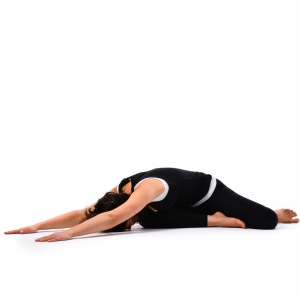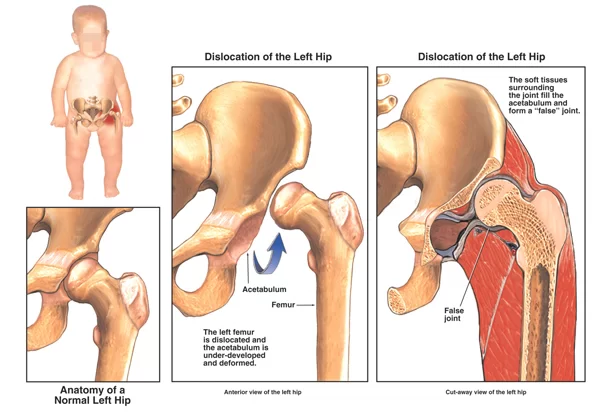Saithalyasana (Animal Relaxation Pose)
What is Saithalyasana (Animal Relaxation Pose)?
Saithalyasana emulates it is named from animal-like cats and dogs. Animal Resting Position is a sitting moderate side twist stretch that requires the bending of the hips as regards one side to complete the forward twist. In Sanskrit, this position is known as Saithalyasana, where the word saithalya refers to ‘relaxation’. The final posture in this position can be contrasted to how animals rest themselves, therefore the name Animal Resting Position. Included in yoga, this position can act as a cooling down or relaxing exercise post a Gentle Flow, or a deep hip opening series.
In inclusion to starting a hip opener, the Animal Resting Position helps open the groins, psoas, and muscles of the back, along with the shoulders with the extending of the arms. This individual way of stretching the back while safe keeping one hip in internal rotation and the other in external rotation helps work on the pelvis and knees, disparately, strengthening one side while stretching the other side. Start an asymmetrical position, students can work on the hip flexors and slowly prepare themselves for all variations of Virasana (Hero Position), where the hips are in internal rotation.
While this is a landing exercise, it can also be comprised in the warm-up section of the yoga routine for hips ahead moving into severe seated hip opening positions. In addition, the side-twist involved during the position removes the stiffness from the spine and makes it flexible. The bending of the torso, from the base of the spine upwards to the shoulders, also gives a moderate massage to the abdominal area, which can be a good therapeutic exercise to stimulate the abdominal organs.
At a very different level, Animal Resting Position can be comprised of a Karma Yoga routine that can help to increase the meditative mind. The exercise can help to appear the paths of the spiritual discharge as it teaches them to act according to Dharma. The deep stretch complicated allows the free flow of Prana (energy) focuses on all the elements. The bend complicated in the position along with the landing action activates the Manipura Chakra which is accountable for balancing the three doshas in the body and is also accountable to keep the immunity strong, especially during the season change. Therefore can be appraised to be included in the Spring Yoga series. Thus, Animal Resting Position can be included in any style of yoga, based on the nature and theme of the yoga practice.
These animals whenever sit like to fold their rear legs below their body and enlarge their anterior legs outward and often put their head between their stretching legs. This they do so to make them modify and calm. Hence, Saithalyasana is called for stress-busting, anxiety, and making oneself modify and calm. This asana is also known for meditation. Saithalyasana also known as the Animal relaxation position is a preparatory position for Bhujangasana or Cobra Position and other such asanas.
Saithalyasana or Animal Relaxation Position also composes your body for meditation and makes you introspective. This asana is beneficial in appeasing the mind and relaxing the whole body. Saithalyasana or Animal Relaxation Position stretches the neck and pelvis in opposite directions and helps in opening the hip joint.
What are the Health Benefits of Saithalyasana (Animal Relaxation Pose)?
The aggregate of stretch and twist complicated in Animal Resting Position conducts many benefits making it a must to be included in everyday yoga routine exercise. These benefits are explained below:
- Stretches, Strengthens, Lengthens: Animal Resting Position (Saithalyasana) deeply stretches the arms, neck, back, hips, psoas, knees, and pelvis and strengthens them. The position strengthens the lower back and arrests the spinal muscles of the middle and upper back. By elongating the spine and stretching the neck also removes the hunching issues. The side-twist tones the abdomen that is helpful for postnatal women with a gentle appealing of the core muscles (abdomen).
- Legs strengthening: It issues suitable stretch to the legs, thus good for legs strength.
- Healthy spine: It helps to supply suppleness to the spinal column, back, and neck region.
- Flexibility and Range of Motion: In the exercise of Saithalyasana (Animal Resting Position), the hips function unusually. With one hip in internal rotation and the other in external rotation, the knees, the pelvic ground muscles, and ankles are also affected. The longer students hold the position, the above-involved joints and muscles obtain strength and flexibility. When the hips are open and flexible, the lower back obtains flexibility too, therefore also affecting the shoulders. Given that it is a seated forward bend position with a gentle bend, the full-back and abdominal muscles get an opportunity to lengthen and strengthen, upgrading the range of motion of the muscles. People who are gymnasts or aerobic practitioners can benefit from this hip flexibility.
- Chest, Diaphragm, and Breath: During Animal Resting Position, due to the side forward bend stretch, the chest is active, making one breath deep with awareness. The compressing of the chest and the abdominal muscles motivate deeper breathing, thus operating the intercostal muscles and diaphragm. With inspired deep breathing, students can endure longer in the posture, and with time, it helps open the blocked channels, leaving room for a clear path for more income of energy (prana).
- Heart and lungs: It makes certains proper oxygenation to the heart and lungs by that good for the health of these organs.
- Awareness, Focus, Alignment, and Posture: The exercise of Animal Resting Position becomes easy and agreeable when the students are conducting or instructed to move in a step-by-step way. Start aware that the hips are functioning creatively affecting the knees and lower back, the raising and bending action should be done with care. Attracting on first bending, and then the forward bend remains the needed involved muscles get the best stretch. In this forward twist landing action, the chest should be on the thighs, to keep the adjustment of the hips and shoulders perfect. When awareness, focus, and adjustment are together kept in mind, then capitulating into the position becomes far simple. The right breath with the right the action also plays an important role, and when this breath awareness is inspired, the exercise becomes whole (asana+pranayama). Therefore, it can be a a good way to work for those with a crouch-back (archaic) or even for those with kyphosis. Hence, supporting the hips or head with a blanket or block can be appraised.
- Pelvis: It correctly stretches the pelvis thus great for strengthening the pelvis.
- Constipation: It helps to replace constipation.
- Balance and Emotion: Animal Resting Position involves bend, side-twist, and stretch. With these positive movements, when students learn to breathe- awareness, they effective the state of equilibrium. With the landing effect of the position, when included in karma yoga, it can help conduct balance in the body-mind-breath, setting a path towards meditation.
- Meditation: The asana is also acceptable for meditation.
- Gastric juices: The correct use of the yoga position helps to secrete gastric juices by that making digestion smooth.
- Stimulation and Organs: During Animal Resting Position, due to the twisted side-twist, the lower back and the origin of the spine get pressure and thus the Root Chakra that is accountable for security and stability gets activated. The deep stretch at the neck area restoratives the Throat Chakra which conducts the power of self-expression and dependence in communication. Similarly, the pressure at the belly area restoratives the Sacral Chakra and the Manipura Chakra which is accountable for sexuality and individuality and power and insight respectively. The side-twist massages the abdominal organs. Hence, the digestive system works effectively.
- Massage internal organs: Exercising this asana remains compaction in the abdominal region thereby squeezing out stagnant and impure blood, thus inspires the capability of internal organs.
- Hip Joint: It is great for the health of the Hip joint.
- Nervous system: It helps in the simple functioning of the nervous system.
- Preparatory Pose: With regular exercise of Animal Resting Position, students can perform the next level positions like Bharadvaja Twist Position II Prep Forward Bend Side Elbows, and Revolved Head On Knee Position as they get simplicity with the side-twist and stretch.
- Others: The twist during Animal Resting Position helps strengthen the pelvic floor muscles, which can be beneficial for postnatal women and women agonizing from menstrual disorders like PCOD or painful periods. Senior students who may not perform heavy standing positions can smoothly perform the position with the help of yoga teachers’ instruction and care. Preparation for meditative asanas and a different for those who find it difficult to maintain meditative asanas for longer periods. In addition, the resident can be introduced to this position, since it is a grounding and cooling exercise. Supply connected to anxiety or depression can be addressed, with proper instructions. Stretches the side muscles and generates more space.
This massage squeezes out stagnant, impure blood and inspires it to flow back to the heart and lungs for oxygenation. Benefits for Women: Alleviates rib pain during pregnancy. Removes pelvic congestion.
What are the Preparatory poses for Saithalyasana (Animal Relaxation Pose)?
- Dandasana
- Ardha Matsyendrasana
- Tadasana
- Vajrasana
- Sukhasana
- Shashankasana
How to Perform Saithalyasana (Animal Relaxation Pose)?
Animal Resting Position (Saithalyasana) can be done by following the below-mentioned steps:
Students can sit on the mat in Dandasana to start the position.
From Dandasana, carefully bend the left knee and place the sole of the left foot as opposed to the wall of the right thigh. Now, twist the right knee and position the right foot-sole to the outside of the right buttock. The people will be in Bharadvaja Twist Position II Prep (Bharadvajasana II Prep) (but with the right hip in external rotation).
Take a deep inspiration and turn your torso to face the left thigh. As you expire, stretch both of your arms along each side of the left thigh, twisting yourself to the side of the folded leg.
Stretch the arms as far as is comfortable, as you floor the sit bones.
Lengthen and stretch and slowly endure in this position for at least 4-6 breaths. With each expiration, gently move forward from the hips and shoulders.
To release, breathe in, raise your head, and slowly lift your chest off the ground as you inspire along with raising the arms upwards. Release and come to sit back in Dandasana (Staff Position).
When you return to the staff position, now modify for a while. If your legs are feeling smart, then you can vibrate and stay restful. Then start with take turns legs to do the side-bend to the right side with the same steps as introduced above.
Modify and abdicate in Staff Position Hands Back Variation (Dandasana Hasta Back Variation).
How to Perform Saithalyasana (Animal Relaxation Pose) by Watching a Video?
What are Follow up poses for Saithalyasana (Animal Relaxation Pose)?
- Swastikasana
- Paschimottanasana
- Dandasana
- Supt Vajrasana
- Setubandhasana
What are the Beginners tips in Saithalyasana (Animal Relaxation Pose)?
- Keep your right sole touched to the interior of your left thigh properly and your left foot touched to the side of the buttock properly too. This helps you to stretch effectively.
- Use a small cushion to sit on if needed.
- Hip Movements – As a variation from Saithalyasana, the meditation position, place the left hand on the left hip and the right hand bracing on the floor.
- Inspire lifting the left hip upward, expiring lower the hip down. Replicate the movement a few more times and then recurrent on the opposite side.
- Twist – As a variation from Saithalyasana, the meditation position, inspire and conduct the left hand to the right knee and right hand beyond, supporting on the ground.
- Expire and twist to the right side. Breathe normally and maintain the bend. Inspire and exhale turn back to the anterior. Repeat on the left side and then with opposite legs.
- Forward Bend – As a variation, if one cannot put them head on the floor they can place the forearms on the floor. If preferred conduct the hands in easy cobra. Attend the elbows further away to lengthen the spine. Breathe normally.
- Side Stretch – As a variation from Saithalyasana, the meditation position, inspire the lifting of the left arm. The right arm endures by the side. Expire and slowly twist to the right side, keeping the left hip down and stretching the whole left side. As you stretch to the right side the right arm can be advanced further away from the body. Inspire and lift the left arm and expire lower the arm. Recurrent on the right side and then repeat with facing legs.
What is the Breath Awareness in Saithalyasana (Animal Relaxation Pose)?
- The breathing should be as reported in the technique, full and deep, slow, and make certain that it is also synchronized with the body movements. You should also notice the relaxation of your back.
- When you are fully confidential with the asana, then close your eyes and become aware of the motion of the body and breath. In the final position, you should be aware of deep and slow breathing.
- The duration in the final position should only be as long as you are agreeable. With exercise, try to maintain the final position for a minute or so on each side of the body, as long as this does not cause any immoderate discomfort.
- Breathe normally when you are arranging for the position. Inspire when you lift your arms, this will fill up your lungs completely.
- Expire when you twist from your hips.
- Inspire when you lift to return to the starting position and expire while lowering your arms finally.
- Spiritual: During the exercise, you should try to be conscious of the Manipura chakra.
- On a stable bottom and erect spine as well as the compression of the abdomen.
What is the Variation of Saithalyasana (Animal Relaxation Pose)?
As students have varying capabilities, a given yoga position may be simple for a particular person but hard for another. In like cases, as a yoga teacher you can establish position variations to further challenge people who are finding a specific yoga position simple, or introduce an easier variation of a position for the people who are finding the main position hard.
Position variations can hence help your peoples grow and build further confidence in their yoga exercise no matter what their starting capability levels are. And this is where your role as a yoga teacher becomes more important. Under we have compiled position variations of Animal Resting Position at one place to give you aims to plan your yoga classes as you interconnect with students of different levels.
Below are some common variations of the yoga position Animal Resting Position with a base position as Torso Stretch Position (Bharadvajasana):
- Seated Windshield Wiper Position
- Deer Position
- Supported Bharadvaja Twist Position
- Torso Stretch Position
- Mermaid Side Stretch Position
- Bharadvaja Twist Position Ii Prep Variation Arms Raised Twist Flow
- Torso Stretch Position I Prep
- Bharadvaja Twist Position Ii Prep Side Bend Variation
- Seated Windshield Wiper Position Chest Opener Variation
- Bharadvaja Twist Position II
- Animal Resting Position
What are the Precautions and Contraindications for the Saithalyasana (Animal Relaxation Pose)?
Precautions:
saithyasana is a beneficial and relaxing asana, but should not be Exercised by everybody. You should not do this asana under the backing conditions:
- If you have a back or neck injury, do not try this asana without instruction.
- This asana is not suggested for pregnant women in their late second and third trimesters.
Contraindications:
The contraindications for Animal Resting Pose are introduced below:
- Injury and Surgery: Animal Resting Position attracts deep stretch at the arms, neck, back, hips, and knees. So with any surgeries or injuries at these introduced areas, people should not be allowed to achieve the position. Furthermore, any surgery connected to the abdominal region, spine, neck, or rib cages are also contraindicated, therefore best to avoid them. For instance, those with a hernia, diastasis recti, etc.
- Ailment and Physical Strength: The side twist is complicated in the position put pressure on the back. Hence, with conditions of severe spondylitis, students should stay away from the position. Considering the pressure on the belly pregnant women should not achieve the position. Therefore, the postnatal women can. Comparably, with a stomach infection or any abdominal organ matter, people should be controlled from the exercise.
- Lack of Body-Breath Connections: The position essentials focus and breath consciousness to be achieved. Hence, with conditions of asthma or lack of body breath connection cannot be completed. Holding the breath, or shallow breathing will only conduct discomfort to the body, disturbing the energy levels, which go against the opinion of the actual yoga exercise.
It is not compulsory to do all the variations. Circumvent if there is a pain in the hip or knee.
What are the dos and Don’ts in Saithalyasana (Animal Relaxation Pose)?
Do’s:
- Sit upright
- Bend from the hips
Don’ts:
- Round the back
What are the Therapeutic applications for Saithalyasana (Animal Relaxation Pose)?
- Digestive problems
- Rib pain






